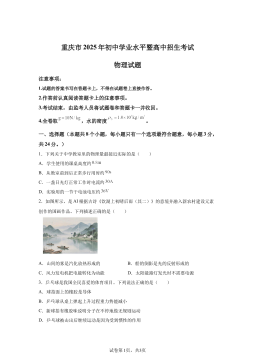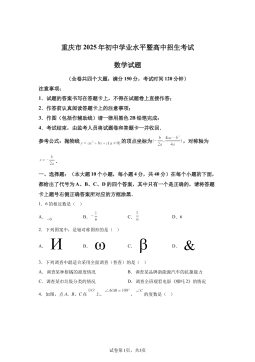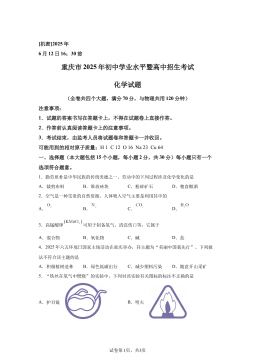
Tripartite entanglement measure under local operations and classical communication
Xiaozhen Ge,1Lijun Liu,2, ∗and Shuming Cheng3, 4, 5, †
1Department of Applied Mathematics, The Hong Kong Polytechnic University, Hong Kong, China
2College of Mathematics and Computer Science, Shanxi Normal University, Linfen 041000, China
3The Department of Control Science and Engineering, Tongji University, Shanghai 201804, China
4Shanghai Institute of Intelligent Science and Technology, Tongji University, Shanghai 201804, China
5Institute for Advanced Study, Tongji University, Shanghai, 200092, China
(Dated: December 5, 2023)
Multipartite entanglement is an indispensable resource in quantum communication and compu-
tation, however, it is a challenging task to faithfully quantify this global property of multipartite
quantum systems. In this work, we study the concurrence fill, which admits a geometric inter-
pretation to measure genuine tripartite entanglement for the three-qubit system in [S. Xie et al.,
Phys. Rev. Lett. 127. 040403 (2021)]. First, we use the well-known three-tangle and bipartite
concurrence to reformulate this quantifier for all pure states. We then construct an explicit example
to conclusively show the concurrence fill can be increased under local operations and classical com-
munication (LOCC) on average, implying it is not an entanglement monotone. Moreover, we give a
simple proof of the LOCC-monotonicity of three-tangle and find that the bipartite concurrence and
the squared can have distinct performances under the same LOCC. Finally, we propose a reliable
monotone to quantify genuine tripartite entanglement, which can also be easily generalised to the
multipartite system. Our results shed light on studying genuine entanglement and also reveal the
complex structure of multipartite systems.
I. INTRODUCTION
Entanglement, having no classical counterpart, is of
fundamental importance in quantum theory [1], and also
an essential resource in various quantum information pro-
cessing tasks, including cryptography [2, 3], teleporta-
tion [4, 5], dense coding [6, 7], secret sharing [8, 9],
metrology [10, 11], and computation [12]. Thereof, an
important problem arises about how to quantitatively
measure the degree of entanglement for the quantum sys-
tem. Typically, one entanglement measure is defined as
some non-negative function which maps any quantum
state to a real number in the interval [0,1], and satis-
fies a set of reasonable assumptions [1, 13, 14], such as
being zero for all non-entangled states and invariant un-
der local unitary operations. Within the resource theory
of entanglement [15, 16], it is further required to be non-
increasing under local operations and classical communi-
cation (LOCC) on average, hence being an entanglement
monotone of which entanglement never increases under
the free LOCC operations. Correspondingly, numerous
entanglement measures and monotones have been devel-
oped [17–22], especially for the low-dimensional bipartite
system, such as concurrence [23, 24] and logarithmic neg-
ativity [25].
It is challenging to find proper measures for multipar-
tite entanglement due to the complicated partial separa-
bility structure of multipartite systems. Indeed, in or-
der to detect genuine multipartite entanglement which
is the key resource in multi-party information tasks,
the reliable measure needs to meet extra conditions,
∗lljcelia@126.com
†drshuming.cheng@gmail.com
like being zero for partial separable states and strictly
positive for genuinely entangled states [26, 27]. Thus,
there has been some commonly-used quantifiers, includ-
ing α-entanglement entropy [27] and generalized concur-
rence [28, 29] which can not detect all genuinely entan-
gled states, and few genuine multipartite entanglement
monotones [30–35]. In particular, the concurrence fill,
with a nice geometric interpretation as the square root
of the concurrence triangle area, was recently proposed
to measure the degree of genuine entanglement for the
three-qubit system [36], together with an experimental
test [37]. Although it conforms almost all of the necessary
conditions mentioned above, a fundamental problem still
remains open about whether it is an entanglement mono-
tone, or equivalently, it admits the LOCC-monotonicity.
Here we first establish the close connections between
the concurrence fill and the well-known three-tangle [38]
and reduced bipartite concurrences [23, 24, 39, 40], of
some interest in its own right. Then, we solve the above
open problem via an explicit example to show that it
can be increased under LOCC on average, implying it
is not an entanglement monotone. Furthermore, a sim-
ple proof of the LOCC-monotonicity of three-tangle is
presented, which completes the proof in [41]. It is also
interesting to find that the bipartite concurrence and the
squared can have distinct performances under the same
LOCC. Finally, we conjecture that the area of the tri-
angle with edges corresponding to the bipartite concur-
rences is an entanglement monotone and also propose a
reliable monotone to quantify genuine tripartite entan-
glement, which can be easily generalized to the general
multipartite systems.
The rest of this work is structured as follows. Sec. II
introduces basic notations and useful relations about the
concurrence fill for all pure three-qubit states. In Sec. III,
arXiv:2210.06700v2 [quant-ph] 3 Dec 2023

 2024-11-21 13
2024-11-21 13
 2024-11-21 11
2024-11-21 11
 2024-11-21 6
2024-11-21 6
 2024-11-21 8
2024-11-21 8
 2024-11-21 9
2024-11-21 9
 2024-11-21 8
2024-11-21 8
 2024-11-21 8
2024-11-21 8
 2024-11-21 8
2024-11-21 8
 2024-11-21 10
2024-11-21 10
 2024-11-21 7
2024-11-21 7







 渝公网安备50010702506394
渝公网安备50010702506394
